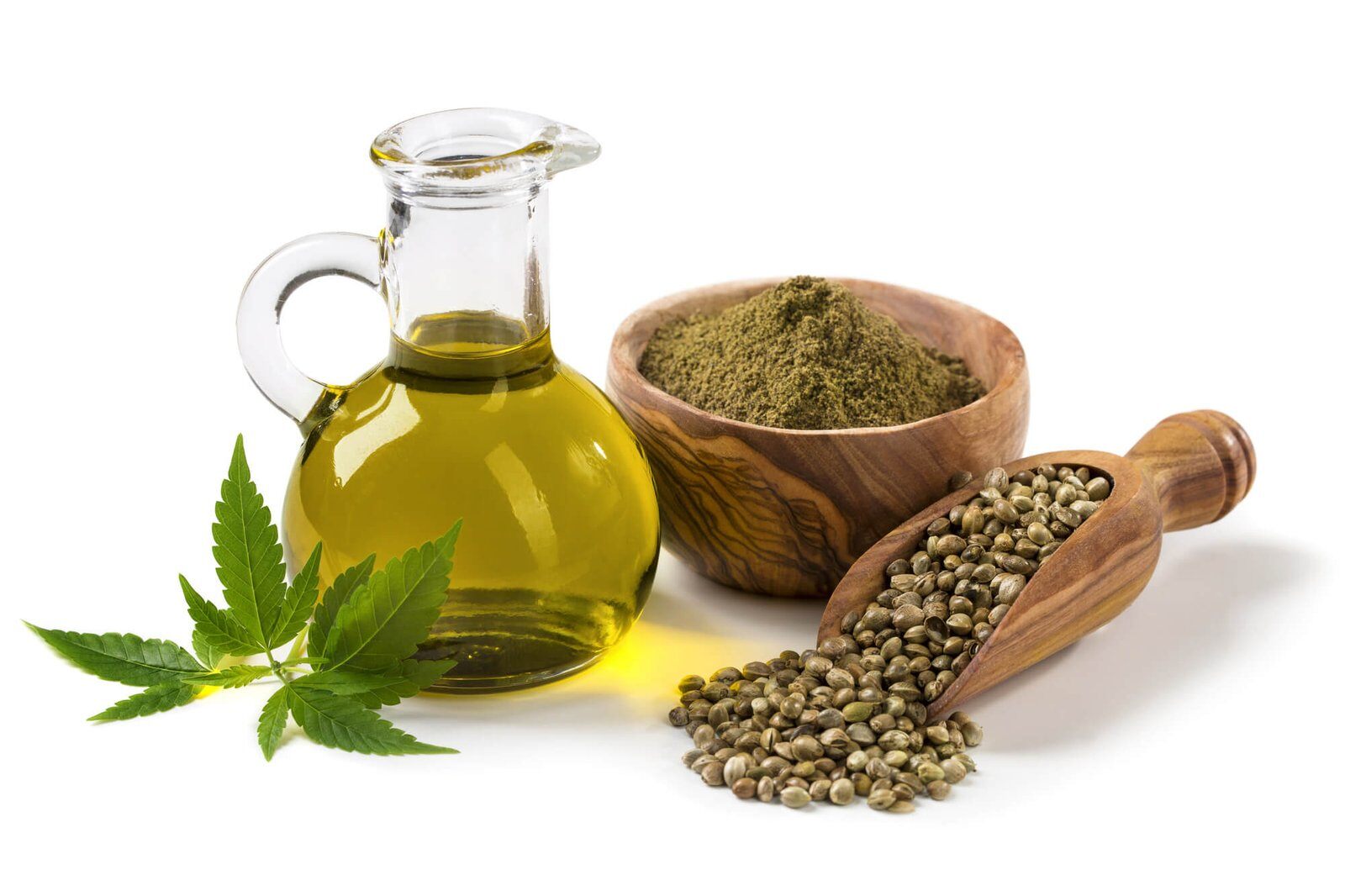8 min read
Weed Decarboxylation: How to Decarb Weed
Cannabis is one of the most popular drugs in the world. According to United Nations reports, over 192 million people use cannabis products...
7 min read
 Dr Kaufman
:
Feb 17, 2025 2:23:22 PM
Dr Kaufman
:
Feb 17, 2025 2:23:22 PM

According to Finances Online, 55 million US citizens are cannabis users. Additionally, as more states legalize the use of cannabis, the legal sales of cannabis for both medical and recreational purposes might reach $35 billion by the year 2025.
If you’re one of the many people in the US who is a cannabis user, or you’re thinking of becoming one, you might have come across this word while learning more about cannabis: “Decarbing.”
However, you might not be sure what it means. Or, if you have a general idea but you don’t know how to use this method, you might be feeling stressed when it comes to figuring out how to do it yourself.
Fortunately, in this article, we’ll review what decarbing your weed means. Finally, you understand what it means and decarb your weed if you want to, making it potent. Read on to learn more.
Decarbing, or decarboxylation, is the process in which one activates compounds present in cannabis, like THC, for example. When someone uses this process, they’re activating the raw cannabis and turning it into a form that’s more potent.
In scientific terms, this is a process in which someone physically alters the chemical structure that various cannabinoid compounds that are found in cannabis plants that are raw—including both hemp and marijuana.
When someone is growing a cannabis plant or when it’s freshly harvested, all the cannabinoids that are contained in the raw cannabis flowers’ trichomes have a group or ring of extra carboxyl that’s attached to the trichomes’ chains.
This group or ring is also referred to as COOH. When you decarb, you’re removing the COOH from the original cannabinoid molecule. This process will effectively transform the THCA into THC, which is active.
If someone’s looking to experience the potent effects of cannabis, it’s necessary to decarb cannabis, as this will turn the compounds into potent ones.
Some natural and slow decarboxylation does occur when fresh cannabis cures and dries after the harvest. This is because time and heat are catalysts of decarboxylation. So even when the process hasn’t officially been put into place, some flowers of cannabis will test for small amounts of THC in addition to THCA.
When someone vaporizes or smokes cannabis, this instantly decarboxylates the cannabinoids.
This is because of the incredibly high temperatures that are present, which make the decarboxylated cannabinoids available instantly for absorption through the process of inhalation.
While it’s easy to absorb cannabinoids that are decarboxylated in vapor form into your lungs, this isn’t the case with edibles.
With edibles, these cannabinoids need to already be present in what you’re consuming so your body can absorb them through the process of digestion.
By heating cannabinoids over time at a lower temperature, decarboxylation can occur, after which these cannabinoids can be put into what you’re consuming. This way, you will feel the potency after the decarboxylation occurs.
The decarboxylation of THCA begins at a temperature of around 220 degrees Fahrenheit. Note that this occurs after the exposure time has been around between 30 and 45 minutes. For the decarboxylation process to occur fully, more time might be required to pass.
Note that many people choose to decarb their cannabis at temperatures that are slightly lower for a period of time that’s much longer so that they can attempt to preserve the terpenes in the cannabis.
Many terpenes that are of the mono and sesquiterpenes type are volatile, so at higher temperatures, they’ll evaporate. When this occurs, they could potentially leave behind aromas and flavors that are undesirable behind.
The integrity of terpenoids and cannabinoids will be compromised by temperatures that are greater than 300 degrees Fahrenheit. This is why temperatures in the range of 200 degrees Fahrenheit are recommended.
Time and heat can cause degradation to occur to other types of cannabinoids. For example, cannabinol (CBN) is created through the oxidization and degradation of THC.
CBN provides an experience that’s less psychoactive directly and that provides a large amount of more sedation.
Decarboxylation is an important process whenever you’re making tinctures, edibles, and other cannabis consumable goods. This is because, when you’re consuming these products, there isn’t any heat added (as opposed to when you smoke or vape).
Decarbing is necessary for extracting the cannabinoids that are most essential from the cannabis plant: THC (tetrahydrocannabinol) and CBD (cannabidiol).
Undecarboxylated and freshly-harvested cannabis flowers contain cannabinoid acids in excess that have little or no psychoactive benefit—that is until they’ve been decarboxylated by processors.
Basically, when you’re decarboxylating cannabis, you’re flipping a switch that will convert the cannabinoid acids so that they become CBD and THC.
This is an incredibly important process because it turns the cannabinoid acid that isn’t psychoactive—THCA—into the highly intoxicating compound, THC, which produces euphoria.
Additionally, this process makes it possible to convert CBDA into CBD. CBD is tamer in its effects than THC.
Without the heat that causes the decarboxylation being present, CBDA and THCA wouldn’t be able to pass through the blood/brain barrier, after which they wouldn’t be able to activate a person’s cannabinoid receptors.
Because decarboxylation makes it possible for important cannabinoids to activate the cannabinoid receptors, this can affect different body functions that are determined by the endocannabinoid system.
These include mood, immune response, inflammation, pain, appetite, and sleep.
Medical patients who treat their symptoms by using topical or oral medical marijuana need to make sure that the cannabis they use is decarboxylated. This will ensure that the product is ready for them to either consume or apply.
Decarbing is also important because it makes it possible to include cannabis compounds that are active in many different products.
It makes it possible for consumers to have many choices, such as capsules, suppositories, syringes, tinctures, brownies, gummies, topical solutions, sublingual options, and edible options.
To decarboxylate your cannabis, you can do this easily if you have an oven at home. First, preheat your oven to 250 degrees Fahrenheit. Then, with parchment paper, line a glass baking dish or baking sheet. This will make it easy for you to collect and then package everything after the process of baking.
Next, choose the type of cannabis you want to decarb. A good choice is cannabis buds that are less-manicured, loose, and fluffy.
It’s also smart to use strains that are both high in CBD and THC, as opposed to strains that are high in THC and CBD. Why? This is because you can more easily create salves and healing oils that are well-balanced.
Note that if you’re planning on making products you don’t plan on getting a THC high from, you can always select a strain that only has CBD.
Additionally, note that if you’re using cannabis you’ve grown at home, you should make sure that it’s been dried and cured properly first.
Once you’ve selected the cannabis you want to decarb, rip its buds into pieces that are small. Some people choose to grind their cannabis, but this isn’t necessary. Once you’ve taken apart your cannabis, put it on the baking sheet or in the glass baking dish you’ve prepared.
Then, decarboxylate your cannabis in the oven. Do this for 25 to 30 minutes at 250 degrees as a general rule.
However, if you want to preserve more of its terpenes, you should use a temperature that’s slightly lower and keep it in for slightly longer. For example, you could decarboxylate it for 230 degrees Fahrenheit for 45 minutes.
Note that many people choose to cover the baking pan the cannabis is in with a second baking sheet that’s upside-down or foil. They do this to trap any terpenes or cannabinoids that could volatilize during the process.
After the time you’ve decided on has passed, you can take the tray out from the oven. Then, you should allow the cannabis to cool fully. When you look at it, it should no longer be green and instead have changed to having a light brown color.
Once it has cooled, transfer the cannabis to a glass container that’s air-tight and ensure that the lid is tight-fitting when you close the container with the lid. A mason jar, for example, could be right for storage.
Finally, store the glass container that has your cannabis in it in a dark, cool place, the same way you should with other cannabis.
Note that, when it comes to the use of your decarbed cannabis, you should make sure to use it to make edibles, salve, or oil within three to six months.
The maximum should be a year—unless you want to end up with a sleep aid instead!
This is because, over time, the THC will turn into CBN through the natural degradation process. This can make you feel quite sleepy.
If you want to decarb kief, there are several steps you have to take. First of all, acquire the kief amount that your recipe for kief-infused edible calls for. There are several ways you can do this. You might take the kief off from the cannabis.
What is kief? Kief is the shiny crystals you find on cannabis flowers. You can use a kief box or similar contraption to remove this from the cannabis you already have.
Another thing you can do is simply purchase the kief separately. You can purchase it in many local dispensaries, the same way you might with other cannabis products.
Once you have the right amount of kief, you should spread it out on a dish that’s oven-safe. Then, preheat your oven to a temperature of 250 degrees Fahrenheit.
Next, wait around twenty minutes. After this time has passed, you’ll be able to use your decarbed kief.
Depending on your needs, you might not want to decarb your cannabis or cannabis product like kief. Generally speaking, if you want to make the effects of the THC or another decarboxylated cannabinoid strong, then it’s smart to decarb.
However, there may be situations where it makes more sense to not decarb your cannabis.
For example, you might prefer to have THCA instead of THC. THCA that’s undercarboxylated has health benefits that are numerous such as being neuroprotective, anti-inflammatory, anti-convulsant, and anti-nausea.
Additionally, it’s a metabolic regulator, bronchodilator and reduces stress.
As for CBDA, the undercarboxylated version of CBD has many health benefits when you maintain the cannabis plant’s raw form.
These include it being anti-inflammatory, anti-anxiety, anti-nausea, painkilling, and anti-convulsant.
If you’re looking for one of the benefits discussed in this section instead of the potent THC effects, then it makes more sense to not decarb your cannabis or cannabis product such as kief.
Now that you’ve learned about what decarbing your weed means, you might be looking for other information related to cannabis. Maybe you want help figuring out how to buy it in your state, or you’re looking for a way to get a medical marijuana card.
If you want a medical marijuana card, you should look no further than Doctors of Cannabis.
We can get you a medical marijuana card in many states, from New York to Ohio to California and more. We also offer card renewals.
To learn more about how we can help you, contact us now.

8 min read
Cannabis is one of the most popular drugs in the world. According to United Nations reports, over 192 million people use cannabis products...

3 min read
The legal marijuana landscape is evolving at an unprecedented pace, transforming from a stigmatized substance into a multi-billion-dollar industry...

3 min read
Original content posted: https://www.thecut.com/2020/04/weed-coronavirus.html It’s been challenging to get a clear picture of the risks...